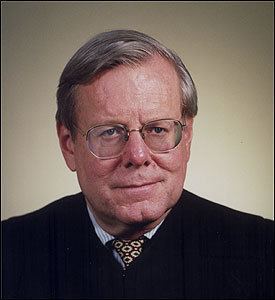
Judge William G. Young
At the recent annual meeting of the Massachusetts Bar Foundation, U.S. District Judge William G. Young, in accepting the Great Friend of Justice Award, delivered a thoughtful and impassioned speech decrying the decrease in jury trials in the federal courts. Trial by jury, he asserted in the one place in our justice system that gives meaning to the words, “equal justice under the law, fair and impartial.” He challenged lawyers and judges to help conceive of innovative ways to help courts remain productive without having to sacrifice actual trials.
As he finished his speech, he handed out the page you see below, titled “America’s Most Productive Federal District Courts.” As you can see, the chart ranks productivity based on hours spent by judges on the bench and in trial. It covers the top third of the district courts. As Judge Young explained in a 2011 opinion, court administrators prefer to rank productivity by a judge’s ability to manage (and reduce) his or her docket. That measure puts on premium on avoiding trials and encourages judges to do whatever they can to avoid trials, Judge Young argued.
“Suppose instead we were to rank our district courts on actual productivity data?” he proposed. “…[S]uch a ranking would provide an enormous incentive for invigorating the trial model of adjudication and with it, the constitutional values a truly independent judiciary is designed to protect and advance.”
To that end, in that 2011 opinion, he set out his first listing of the most productive federal courts, covering the year 2009. The listing below covers 2010. (If no document is visible, download it here.)
[gview file=”https://www.lawnext.com/wp-content/uploads/2012/02/Americas-Most-Productive-Courts-New.pdf”]
 Robert Ambrogi Blog
Robert Ambrogi Blog